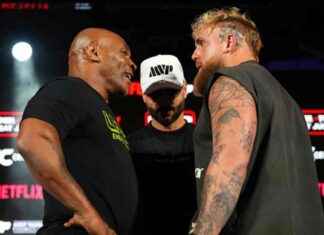Spring training traditionally has been a slow, six- or seven-week crawl to opening day, with pitchers and hitters alike taking plenty of time to acclimate themselves for the marathon season ahead.
It has been that way for over a century, and the leisurely, preseason routine remains one of the time-honored traditions of the game.
So leave it to Kyle Schwarber to show us what a colossal waste of time it is.
After blowing out his knee in his second game last April and missing the rest of the regular season, Schwarber returned in late October to hit .412 in five World Series games, igniting the Cubs’ game-winning, 10th-inning rally in Game 7 in Cleveland.
Schwarber made his Arizona Fall League debut on a Saturday, flew to Cleveland on Monday and was in the World Series opener lineup on Tuesday. In his first two games he went 3-for-7 with two walks and two RBIs.
After the Cubs’ Game 2 win in Cleveland, I asked Kris Bryant if Schwarber had made spring training obsolete.
"Yeah, we’ll skip spring training next year and be fine," Bryant said. "I mean, just jump right into the World Series and have success. No big deal."
Bryant was being facetious, of course, and in truth, most players need the spring to get ready, especially starting pitchers building up their arm strength for 30-plus starts. Schwarber also didn’t have to spend any time practicing his fielding, since he was used strictly as a DH in the road games, with a pinch-hitting appearance at Wrigley Field.
But how long should it really take to get ready for a season?
Photos through the years at spring training.
Couldn’t baseball cut 10-14 days off the spring training schedule, start the season a week or so earlier and end it by the third week of October instead of in early November?
It’s something to think about as the Cubs and White Sox open their camps Tuesday on opposite sides of the Valley.
Or not.
Cubs manager Joe Maddon has always argued that the six- or seven-week time frame for spring training is "perfect," and most of his peers seem to agree. No one likes to complain about spring training, expect perhaps for the rising ticket prices and the lack of autograph signing by star players.
What’s there to beef about? The weather is great, the atmosphere is mostly mellow — except for the rare Adam LaRoche-style drama — and every team can be optimistic because the stats don’t count.
Plus it breaks up the monotony during the slowest part of the sports calendar, between the Super Bowl and the NFL draft. Hall of Famer Rogers Hornsby put it best when he said: "People ask me what I do in the winter when there’s no baseball. I’ll tell you what I do. I stare out the window and wait for spring."
The staring season is over, and soon we’ll be treated to the beautiful sight of pitchers doing wind sprints in the outfield during meaningless games.
I’ve always maintained that the spring training slog is more for mental preparation than for getting physically prepared, and that players could do just as well getting ready with a few weeks of "B" games under their belts. Most of them stay in shape during the offseason anyway. There’s too much money on the line to be a sloth these days.
In recent years, more and more pitching coaches are holding their starters out from early Cactus and Grapefruit League games to pitch on back fields against minor leaguers or in simulated games. They know it’s a more controlled atmosphere, and all that really matters is getting their work in.
Former White Sox ace Chris Sale was held out of the Cactus League until the third week of March last spring and said it helped him focus: "If I don’t throw a two-seamer where I want it, I can throw two more. The focus is higher when we’re doing what we’re doing now."
Closer David Robertson also spent much of the early spring games pitching on backfields, as he preferred.
"I really save my bullets for the (regular-season) games," he said.
Avoiding the Cactus League games didn’t negatively affect their seasons, and they weren’t alone. David Price, Felix Hernandez, Jake Arrieta, Sonny Gray, Phil Hughes and Scott Kazmir were among the other pitchers held out of starts in exhibition games to throw in minor-league or simulated games. Look for more of the same in 2017.
Meanwhile, after going from zero to the World Series in only four days, Schwarber will go back to getting ready for baseball the old-fashioned way, whether he needs it or not.
Rogers Horsnby would no doubt approve.
psullivan@chicagotribune.com
Twitter @PWSullivan
Coming off the World Series win, the Cubs have only a few key roster spots to fill.
But a second consecutive lengthy postseason combined with a longer spring training will necessitate that several seasoned veterans be brought along slower than usual. That policy worked well last spring as starters Jake Arrieta, Kyle Hendricks, Jon Lester and John Lackey helped the rotation compile 989 regular-season innings — the most in the major leagues. The addition of Jon Jay will give manager Joe Maddon plenty of lineup and outfield combinations.
Here are the locks, the good bets and the long shots.
(Mark Gonzales)
Our editors found this article on this site using Google and regenerated it for our readers.





